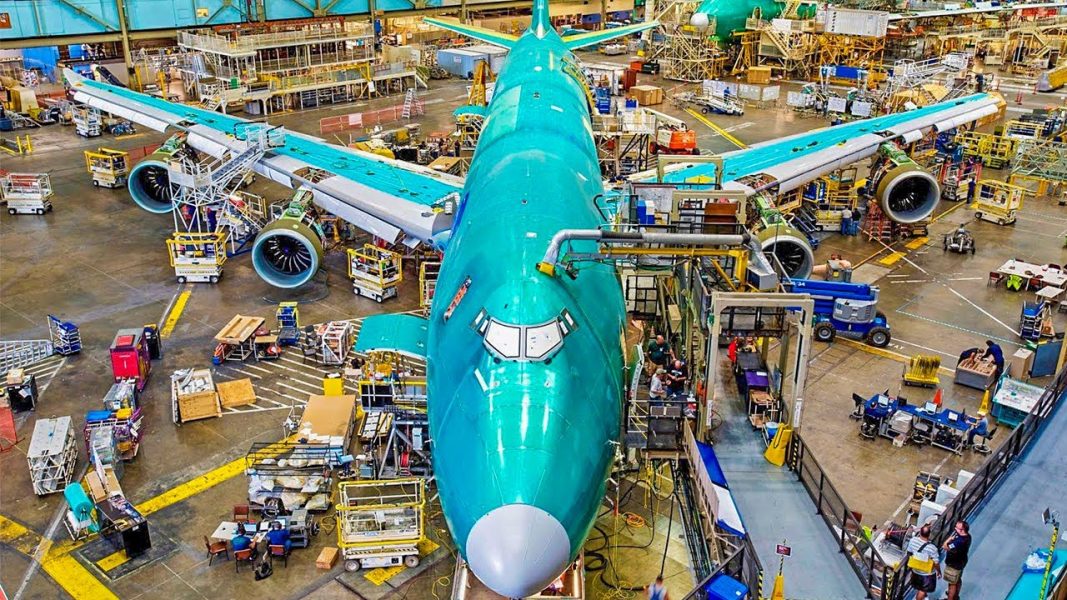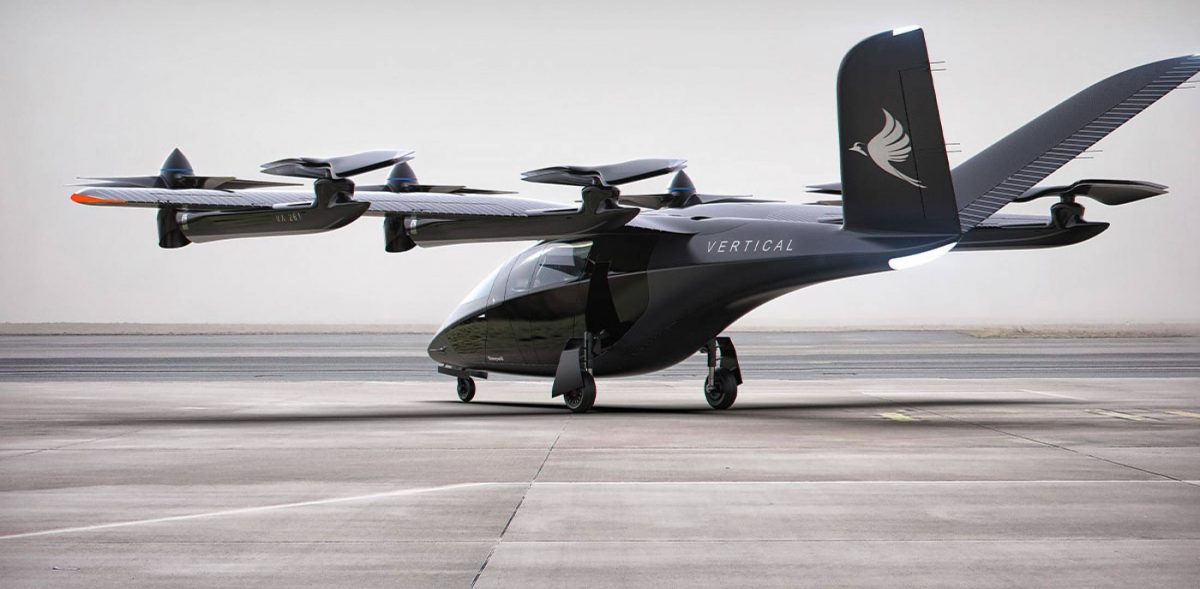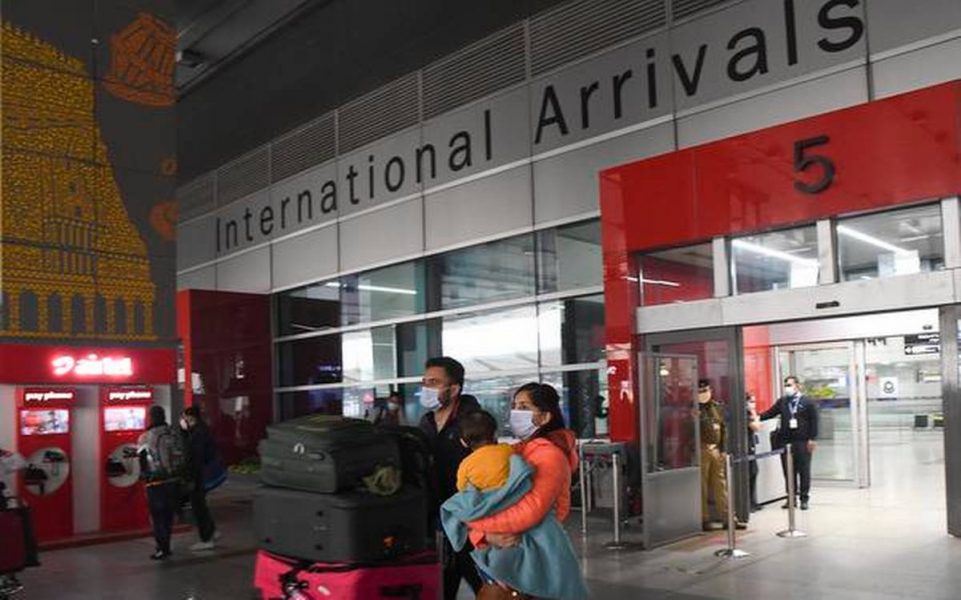India's civil aviation industry is moving from nascency towards the growth phase and progressing "very rapidly" in the area of aircraft manufacturing, Civil Aviation Minister Jyotiraditya Scindia told Lok Sabha on Thursday, December 9.
Replying to a question from Trinamool Congress (TMC) member Saugata Roy, the minister also said that there is a plan to increase the number of airports from 138 to 220 in the next four to five years as building infrastructure in the aviation sector is crucial for the government.
Jyotiraditya Scindia, Union Minister for Civil Aviation
"Civil aviation does not just consist of airline operations and airport operations, but also a whole ecosystem must develop. For that ecosystem to develop, the industry must go from nascency towards growth phase, which is where we are going," Scindia said during the Question Hour.
India has advanced towards manufacturing aircraft, he said, adding that "we are progressing very rapidly in the area of manufacturing of aircraft".
In his question, the TMC member had sought to know from the government if it has taken steps to increase aircraft manufacturing in India, noting that the country was still far behind in passenger aircraft manufacturing.
Tata Boeing Space Limited
"We have Boeing and Tata in a joint venture called Tata Boeing Space Limited, which is today manufacturing the Apache fuselage in India for not only operate within in India but internationally as well. They are being exported," the minister said.
While Airbus has "tied up" with the Tata Advance System to replace the AVRO aircraft of the Indian Air Force with Airbus C295, the Hindustan Aeronautics Limited (HAL) has taken "very important steps" in the area of aircraft manufacturing, which includes manufacturing the Hindustan-228, the Indian version of the Dornier-228, he said.
"Six civilian aircraft are under production with our funding... We are also producing 19-seater light transport aircraft within India with CSR to give a new impetus to regional transport. The ALH-Dhruv (advanced light helicopter) is also being produced by HAL," Scindia added.
IAF's Airbus C295
Replying to a supplementary question asked by the TMC member, the minister said the 'Udaan' has been "a very successful" scheme in terms of viability gap funding to connect previously unconnected or under-connected locations.
"Under this scheme, we have not only provided connectivity between smaller cities and large metros but also built 63 airports, heliports and water aerodromes. We have almost doubled the number of airports in (last) seven years, growing from 74 airports, before 2014, to 138 airports today," he said.
"We plan to grow to 220 (airports) in next four to five years," he added. The minister said that building infrastructure in the aviation sector is "an imperative". "We will surely deliver on that," he added.
Specifying the government’s measures to strengthen the ecosystem for aircraft leasing and financing in India, Scindia said in a written reply that under International Financial Services Centres Authority Act 2019, the International Financial Services Centres Authority (IFSCA) was established on April 27, 2020.
"New tax regime was introduced from April 2020 to make Minimum Alternate Tax (MAT) inapplicable to domestic companies. An exemption has been provided from corporate tax for a block period of 10 years within the first 15 years for leasing units,” he added.
Read next
The government is pushing airlines to change flight timings to prevent overcrowding at airports. It has also asked them to stop operating smaller ATR and Bombardier Q400s aircraft to and from Delhi for two months starting December 15, said people with knowledge of the matter.
Some flight timings have been changed but airlines are said to be resisting too many alterations to the schedule. They also say any ban on smaller planes will lead to a closure of stations such as Kullu and Dharamshala.
Delhi Airport when new guidelines were imposed.
The aviation ministry wants carriers to ensure that too many flights don't arrive or depart around the same time.
"As part of the exercise, flight timings will be changed and this will ensure too many passengers do not clog airports upon arrival during the same time," said a senior government official, who didn't want to be identified. "Not just that, we have decided to ensure flight schedule approvals in the future will be done to ensure many flights do not arrive and depart at the same time."
"For smaller players like us, if they ask to move a morning flight to evening, we can't do it. Passenger Inconvenience that shift means we may have to cancel the flight because there may not be aircraft available. Vistara has 76 departures from Delhi. Of these, 15-20 take off between 6 am and 8 am. A few of them have been shifted."Vinod Kannan, CEO, Vistara
The government expects these measures to ease crowding. Aviation minister Jyotiraditya Scindia is said to be monitoring the situation after complaints of airport overcrowding on social media.
Airlines say it will be impossible to tweak flight timings in the middle of the winter schedule. The Directorate General of Civil Aviation (DGCA) divides the year into summer and winter flight schedules.
SpiceJet's Bombardier Q400
"We are already working under tremendous duress due to constantly changing rules around the Omicron variant," said another top airline executive, who didn't want to be identified. "Changing flight timings now would be impossible. Also, it would be very bad for business."
IndiGo's ATR-72
Such a measure will hit the operations of airlines such as Alliance Air, which only has ATRs; SpiceJet and IndiGo. SpiceJet operates Bombardier Q400s and Boeing 737s and IndiGo operate ATRs and Airbus 320 family aircraft. Another executive added that some of these destinations may not have enough passengers to fill 180-seater planes. ATRs and Bombardier's seat around 70 passengers.
(With Inputs from The Economic Times)
Read next
The demand for eVTOL aircraft has seen a surge like never before, thanks to the ever-evolving technology and rapid advancements in electrical propulsion.
Not surprisingly, the unprecedented surge has pushed key players like Airbus, Boeing, Toyota, Honda, Hyundai and NASA, with each bringing their best innovation (s) to the fore.
Not wanting to leave the game just to the big boys, numerous small-time aviation start-ups have now started grooving to the beat and here's a showdown of 7 unique eVTOLs presented by such players:
1. The Big Bessie
Kelekona is a NY based startup proposing a mass transport-sized eVTOL airbus service. The model, dubbed "The Big Bessie", is different from other models in that when most concepts revolve around two- to seven-seat cabins, Bessie would be capable of ferrying 40 people over long distances.
Freethink
Akin to a " Thunderbird" style lifting body, the gigantic 3.6-megawatt-hour battery pack has the potential to deliver enormous range figures up to 375 miles (600 km) at speeds around 200 mph (320 km/h).
2. The Tiny Tim
Ever fancied sifting through the skies like a Superman? "The Tiny Tim" by Zeva just might be the right option for you. The team at Zeva has modelled a concept wherein the model would stand upright on the ground, take-off vertically, and once airborne, tilt forward head-first and fly Superman-style!
Inceptive Mind
What's more?! It would just take about as much garage space for a motorcycle and can clock speeds up to 160 mph (257 km/h).
3. The Cyclogross
Cyclotech is proposing a four-seat air taxi, and Russia's Foundation for Advanced Research is looking at a six-seat hybrid Cyclocar for military purposes, capable of 155 mph (250 km/h) and ranging up to 310 miles (500 km). Both have flown decent-sized prototypes.
Hot cars
Featuring Voith-Schneider arrangements, fast-spinning barrels are formed by a series of variable-pitch wing blades. Additionally, the thrust can be varied through 360 degrees without the need for the motors to power up.
4. The Supercar "Leo"
eVTOL News
Leo, designed by Urban eVTOL, is a three-seat double-box-wing design, that is touted to clock speeds up to 250-mph (400 km/h) with a maximum range of 300-mile (483-km) all whilst running only on 66 kWh of battery, and fitting in a card slot.
5. The Lego set
Inceptive Mind
The proposed autonomous design by Talyn has a detachable lift system, which will fly back to base and sit on the charger, ready to rendezvous with another cruise stage, hook onto it in mid-air and bring it down gently when required. This is done to mitigate the drag effects of the aircraft once it is in cruise mode while at the same time saving the battery power during its VTOL stage of the flight.
6. The PteroDynamics' Transwing
Forbes
With its clever, dihedral-folding Transwing system, the company claims, transwing would be the most efficient eVTOL design of them all.
https://www.youtube.com/watch?v=3uNboCgDOKQ&t=10s
Demonstration of a Transwing prototype | Pterodynamics Inc | Youtube
Transwing aircraft have much greater range, endurance, and cargo carrying efficiency as compared to all other VTOL designs. given any aircraft footprint size and payload requirements, Transwing aircraft will fly several times as far as any VTOL competitorPteroDynamics claims
7. The eHang EH216
TransportUP
The Chinese eHang EH216 may not be technically different from other rotors of its class per se although it could be well on its way to being fully type-certified and ready for its first commercial air taxi services within a few months.Featuring a simple 16-prop coaxial multicopter, and with a maximum range of 35 km, the top speed it can attain is 130 km. If reports are anything to go by, the Chinese have started to to ramp up mass manufacture at a 6-acre (2.4-ha) factory in Yunfu.
SOURCE: New Atlas
COVER: Aviation International News
Read next
Singapore Airlines (SIA) announced on December 10 that Singapore has been taken off India’s list of ‘At-Risk’ countries. This means Singapore will now be classified together with other countries that are not 'at-risk' – a move that will facilitate smooth travel to India from the country.
“Singapore Airlines is pleased to share that Singapore has been removed from the list of ‘At Risk’ countries for international arrivals into India. With this new development, passengers arriving into India from Singapore will no longer be subjected to additional arrival protocols specified for countries categorised as ‘At Risk’ by the Indian authorities.These additional protocols include a mandatory on-arrival RT-PCR test and seven days of home quarantine, with a follow-up RT-PCR test on day eight."Singapore Airlines
Earlier on Tuesday, December 7, India removed Bangladesh from the list of “countries at-risk” about the new coronavirus variant Omicron, the Ministry of Health and Family Welfare announced. The announcement found prompt support from Dhaka where Foreign Minister Dr A.K. Abdul Momen said the decision was taken because of a request from the Government of Bangladesh. Sources in the Ministry of Home Affairs said the Indian move was prompted by the upcoming visit of President Ram Nath Kovind to Bangladesh.
At present, countries like the UK, South Africa, Brazil, Botswana, China, Ghana, Mauritius, New Zealand, Zimbabwe, Hong Kong, Tanzania and Israel are placed in the countries of at-risk categories.
The updated list of 'At-Risk' counties
India had recently updated the list to add Ghana and Tanzania because of the spread of the Omicron coronavirus variant.
Under the latest government guidelines for passengers arriving from at-risk countries, the commuter will have to undergo an RT-PCR test on arrival in India and will be required to wait for the results before leaving the airport or taking a connecting flight, according to revised guidelines issued by the Health Ministry.
Passengers arriving from ‘At No Risk’ countries can enjoy quarantine-free travel within India and will need to self-monitor their health for 14 days, the SIA said. However, a random sample of 2% of the passengers travelling from Singapore will need to undergo RT-PCR testing on arrival at Indian airports, the south-east Asian airline added in the statement.
The SIA has restarted passenger services from eight Indian cities, including daily Vaccinated Travel Lane (VTL) services from Chennai, Delhi, and Mumbai from November 29, providing eligible customers with quarantine-free entry into Singapore.
Scoot, which is SIA's low-cost subsidiary, operates non-VTL services from Amritsar, Hyderabad, and Tiruchirappalli.
Customers travelling to Singapore from India on non-VTL flights will need to adhere to the category (II) travel and health control measures laid down by the Singapore government.
Read next
SpiceJet Boeing 737 MAX safely returns to Mumbai after a mid-air technical glitch
Radhika Bansal
10 Dec 2021
SpiceJet on Thursday, December 9 said its 737 Max plane, which was heading from Mumbai to Kolkata, returned to Maharashtra's capital city due to a technical issue.
All Max planes were grounded in India by the Directorate General of Civil Aviation (DGCA) on March 13, 2019, three days after the crash of an Ethiopian Airlines 737 MAX plane near Addis Ababa, which had left 157 people, including four Indians, dead.
The engine on the plane was manufactured by a venture between General Electric Co. and France’s Safran SA.
The incident doesn’t appear to be linked to automated software known as the Maneuvering Characteristics Augmentation System, or MCAS, which was established as the main reason for the 2018 and 2019 crashes in Indonesia and Ethiopia that killed 346 people.
After Boeing made necessary software rectifications, the DGCA had on August 26 this year lifted the ban on Max planes' commercial flight operations. SpiceJet resumed operating its Max planes for commercial flight operations last month.
SpiceJet flight SG- 467 operating Mumbai-Kolkata returned to Mumbai after take-off due to a technical issue. The aircraft landed safely in Mumbai, a SpiceJet spokesperson said on Thursday, December 9.
The three-year-old aircraft (VT MXE), which had departed Mumbai at 6.55 pm was eastward bound and had climbed to about 33,000 feet when a problem with hydraulics and 'oil filter bypass' forced the pilots to divert, said the source. The aircraft landed in Mumbai around 7.50 pm.
SpiceJet, the only operator of Max planes in the country, had signed a USD 22 billion deal with Boeing for 205 aircraft in 2017 and has 13 of these planes in its fleet at present.
According to Boeing, as of now, over 175 out of 195 global regulators have opened their airspace to the 737 Max.
Read next
DGCA extends ban on scheduled international flights till January 31, 2022
Radhika Bansal
10 Dec 2021
India will keep its scheduled international passenger flights suspended till January 31, 2022, aviation regulator DGCA said on Thursday, December 9.
Amid rising concerns over the coronavirus variant Omicron, the Directorate General of Civil Aviation (DGCA) had on December 1 decided not to resume scheduled international flights from December 15, less than a week after announcing that it would restart the services.
The current list of "at-risk" countries, updated on 9 December, includes the United Kingdom, other countries in Europe, South Africa, Brazil, Botswana, China, Ghana, Mauritius, New Zealand, Zimbabwe, Tanzania, Hong Kong and Israel.
The regulator issued a circular on Thursday, saying "The competent authority has decided to extend the suspension of scheduled international commercial passenger services to and from India till 2359 hours of January 31, 2022."
Scheduled international passenger services have been suspended in India since March 23, 2020, due to the coronavirus pandemic. But special international flights have been operating under the Vande Bharat Mission since May 2020 and under bilateral "air bubble" arrangements with selected countries since July 2020.
https://twitter.com/DGCAIndia/status/1468924872239685632
India has formed air bubble pacts with around 32 countries including the US, the UK, the UAE, Kenya, Bhutan and France. Under an air bubble pact between two countries, special international flights can be operated by their airlines between their territories.
Aviation Minister Scindia in a written reply to the Rajya Sabha had said that the decision to resume the flights was taken after recognising the increased vaccination coverage across the globe, changing the nature of the pandemic. "However, because of the evolving global scenario with the emergence of new variants of concern, the situation is being closely monitored and reviewed in consultation with other Ministries, with regard to taking any further decision on the issue," Scindia added.
The emergence of the new Covid variant, Omicron, first found in southern Africa, has sparked a global alarm, with several countries shutting borders and imposing travel restrictions. The WHO has designated Omicron as a ‘variant of concern’, saying that it would take quite some time to accurately gauge its level of severity. India has also reported Omicron cases, with several states, including Maharashtra, Delhi, Rajasthan and Karnataka, reporting the new strain.





Comment